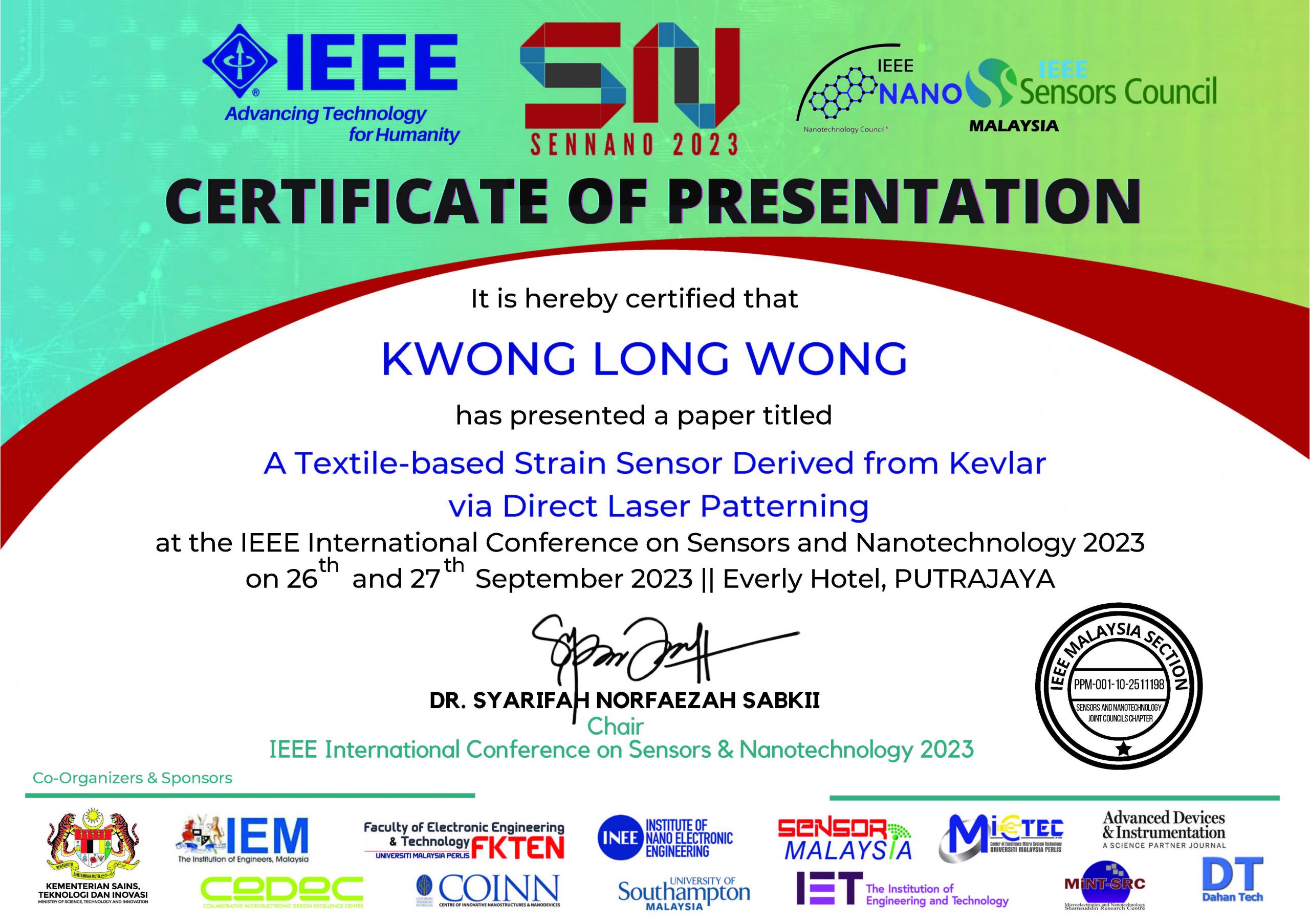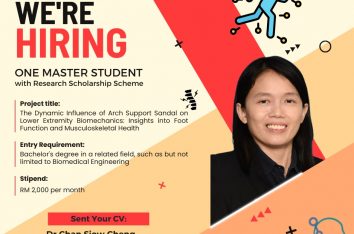Mr. Wong Kwong Long, a PhD student, presented his paper titled “A textile-based strain sensor derived from Kevlar via direct laser patterning” at the IEEE International Conference on Sensors and Nanotechnology 2023, held from October 26-27, 2023. The conference is funded under the CHST Excellent Award Grant.
In recent years, the demand for flexible and stretchable strain sensors has grown significantly. Textile-based piezoresistive strain sensors are a promising solution, but their development hinges on suitable active materials. Among different active materials for strain sensing, carbonaceous materials, especially graphene derivatives are widely used to replace the conventional conductive metals and polymers. Traditional methods for creating graphene-based textile strain sensors involve transfer processes, which can lead to performance issues. To address this gap, Kwong Long proposed a direct laser scribing on Kevlar textile to transform it into laser-induced graphene (LIG) through the photothermal effect. This innovative method not only resolves the limitations of traditional techniques but also offers numerous advantages. It eliminates the need for hazardous chemicals and complex experimental procedures, enabling direct patterning of laser-induced graphene (LIG) on textiles in ambient conditions using a laser platform. Under optimal laser scribing parameters, Kwong Long has successfully fabricated LIG strain sensors. These sensors feature graphene on the front side, while Kevlar fibers are retained on the back side. The development of strain sensors with exceptional sensitivity and rapid response times within a limited strain range is a key objective in sensor technology.
In this study, the fabricated sensors have achieved an extraordinary level of sensitivity (a maximum gauge factor of 3215) in a narrow strain range (below 10%) while maintaining an ultrashort response time of just 20 ms, with a recovery time of 30 ms. These remarkable attributes, particularly the high sensitivity and rapid response, represent a significant advancement in the field of strain sensor technology. To illustrate the practical application of this innovation, Kwong Long integrated graphene-based sensors onto a wearable glove. This integration opens new horizons for human finger monitoring, demonstrating the immense potential of this technology for various applications in healthcare, virtual reality, and human- computer interaction.
During the conference session, Kwong Long had the opportunity to attend sharing sessions delivered by researchers from different research backgrounds. Kwong Long was impressed by the inspiring research ideas presented by the researchers, keeping him updated with the most recent trends and developments in their specific research fields. Kwong Long regarded the experience as an enriching and motivational one.




